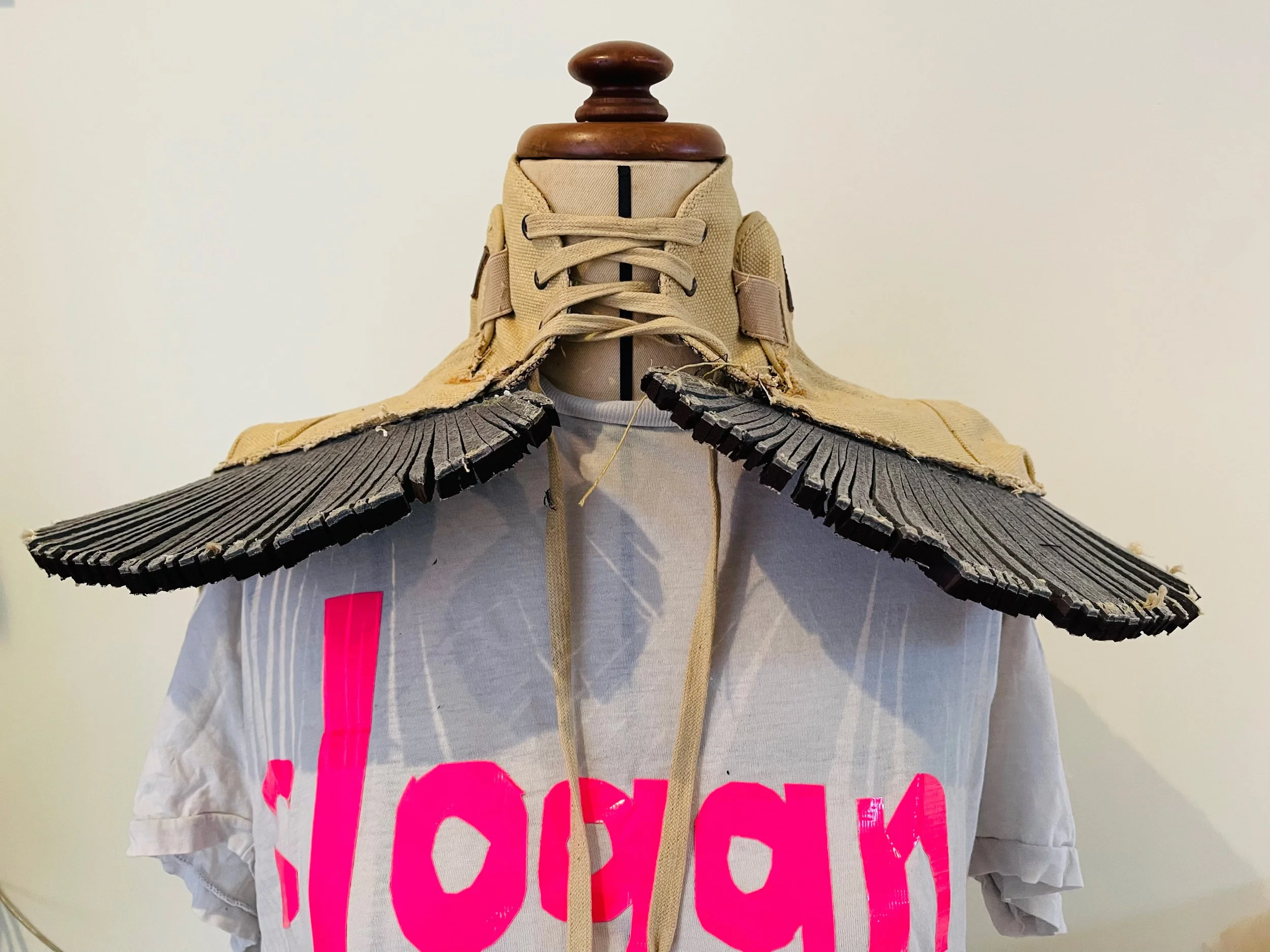This is Not a Shoe
The Affordances of Affordance Theory for Sustainable Design Pedagogy
In April 2022, it was my pleasure to present the outcomes of recent research conducted in the School of Fashion and Textiles at RMIT University at the annual conference for the International Foundation of Fashion Technology Institutes (IFFTI) held at Nottingham Trent University.
Inspired by my doctoral research exploring the semiotic and material affordances of shoes for wearers and producers in processes of being and becoming, the research guided and reflected upon the design, development and delivery of the course Fashion Design Body Artefacts and Accessories on the Bachelor of Fashion Design.
The learning within the course was scaffolded upon the initial ‘This is Not a Shoe’ activity which required students to deconstruct old shoes using manual hand tools and reconstruct the resulting materials into artefacts or accessories to be worn on the body. Marks were awarded for minimal waste and the only materials that could be used were those sourced from the shoes themselves (no adhesives, jewellery findings, paint or decorations).
The activity was designed to enable and enhance the perception of matter and activate a sustainable ‘material-driven’ approach to design. In this context, rather than sourcing virgin materials to realise a preconceived idea (often a sketch based on conventions and archetypes), students were encouraged to let the materials guide the design process; the materials themselves becoming unexpected collaborators in the creative process.
The research conducted with students on the course demonstrated the value and parameters necessary for upcycling activities to effectively initiate a circular design mindset. First, the difficulties encountered during the disassembly of the shoes encouraged conscious reflection on unsustainable production processes (for example the use of adhesives).
Perhaps more significantly, through a process of interaction and material transformation, new affordances and creative opportunities emerged, enabling students to move away from the notion that materials and artefacts are finite, with a fixed purpose; a beginning (birth) and an end (death).
Fundamentally, the activity used the process of deconstruction to defamiliarise everyday objects, enabling even the most abject, invisible, redundant or mundane of materials and tools to become a creative resource and pathway to innovation. The research demonstrated how students were able to enhance their recognition of these unconventional materials' endless and rewarding potential, which started to override their perception as a burden. Research findings also suggested that an enhanced ability to see the potential of all materials becomes a burden in itself that encourages a more mindful approach to consumption.
In 2020, the capabilities established during the initial ‘This is Not a Shoe’ activity were further developed in two subsequent assignments using leather waste provided by German footwear manufacturer Trippen to produce artefacts and accessories to be worn or used by the body. Again, students were encouraged to use existing complex materials varying in quality, colour and shape to guide the design process, simultaneously finding sustainable solutions to fashion ‘waste’. In 2021 and 2022 students were required to find other materials that had outlived or were surplus to their intended purpose to guide the design process.
Further information about the research can be found at www.alexandrasherlock.com, including teaching resources for educators should they wish to conduct the activity themselves.



